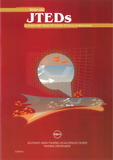Study on Juvenile and Trash Excluder Devices (JTEDs) in Indonesia
Share
ບົດຄັດຫຍໍ້
The experiment was conducted during August 2002 in the Bintuni Bay, Arafura Sea of East Indonesia using the commercial double-rigged trawler in order to examine the releasing ability of Juvenile and Trash Excluder Devices (JTEDs) in bottom trawl. This experiment was in the serial study of using the JTEDs under the program of selective fishing gear and practice for responsible fishing, sponsored mainly by FAO/GEF project. Three types of JTEDs (Rectangular, Semi-curve and Rigid sorting grid JTEDs) with 40 mm bar spacing were used in this experiment as 40mm bar spacing has been shown the best results for releasing the non-target catch and could maintain the maximum catch resulted from the previous experiments.
The results indicated that the rigid sorting grid JTED could give the escapement levels of about 79% of the total catch when it was about 25% for semi-curve and rectangular type JTED. However, it was observed that semi-curve JTED performed the highest ability in shrimp retention ratio as compared with another two type of JTED used in this experiment. It could be suggested that the effectiveness of the modifications for JTEDs used in the region could be further fine-tuned to improve the performance.
Suggested Citation
Chokesanguan, B., Ananpongsuk, S., Chanrachkij, I., Manajit, N., & Tampubolon, G. H. (2003). Study on juvenile and trash excluder devices (JTEDs) in Indonesia. Samut Prakan, Thailand: Training Department, Southeast Asian Fisheries Development Center.
Collections
- SEAFDEC/TD [14]

